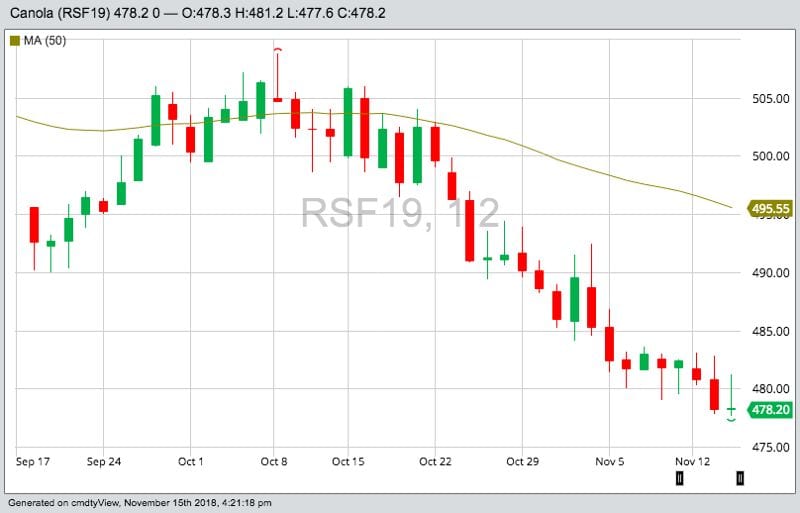CNS Canada — As global oilseed overproduction and a trade war rages on between the U.S. and China, producers should get used to lower canola prices, according to one analyst.
“For the last two years (we’ve been) moving in a $480-$530 type of range. My best guess is that when we get into 2019, (without an) absolute bullish weather story or political story, we’re going to shift this down to a nearby maybe $30 lower,” Greg Kostal, president of Kostal Ag Consulting, said Wednesday during the oilseed outlook at Grain World in Winnipeg.
Read Also

Alberta crop conditions improve: report
Varied precipitation and warm temperatures were generally beneficial for crop development across Alberta during the week ended July 8, according to the latest provincial crop report released July 11.
ICE Futures canola contracts have been around the $480 per tonne mark lately, having dipped below the $500 per tonne mark in October. Ongoing trade war news and large producer deliveries of canola into the commercial pipeline have pressured the market.
According to Kostal, the market should go lower still. He expects the U.S./China trade war to end eventually, but it will permanently change trade patterns and thus affect the oilseed market trade.
“When you have been as a major consumer forced into changed behaviour, whether it’s political or economic, now you’ve been introduced to doing things in ways that you never otherwise would have been before. You’re going to remember that,” he said.
Also there is emerging production from South American and former Soviet Union countries, which could threaten traditional western countries’ trading partners.
According to Kostal, these countries have been using western technologies to increase their yields and production numbers, then undercutting countries such as Canada by selling commodities for cheaper.
“We’ve got to focus on our niche, something that differentiates us from them. But if we’re going to compete against cheap price, these guys are going to lead the way,” he said.
Kostal said the biggest issue canola is facing is its soybean problem. Canola closely follows soybean futures and growing U.S. soybean stockpiles will affect the canola market negatively. However, overall, Canadian farmers do have a leg up on their U.S. counterparts due to crop diversity.
“There usually is one or two commodities within the basket that does very well or is leading. And we’ve got a Canadian dollar that can (stagnate) and keep us somewhat more competitive than we need to,” Kostal said.
Moving forward, Kostal thinks producers need to not get stuck on certain price targets and only sell when canola hits those marks.
“You’ve got all these local premiums that can come and go, not everywhere. But leveraging all those micro things within the context of the random volatility is where I think you will differentiate yourself,” he said.
— Ashley Robinson writes for Commodity News Service Canada, a Glacier FarmMedia company specializing in grain and commodity market reporting.















